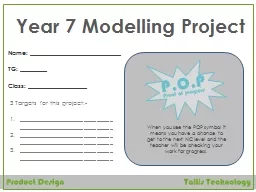PPT-Basics of energy modelling III: Time representation and considerations
Author : faustina-dinatale | Published Date : 2019-03-17
CLEWS Summer School ICTP Trieste Italy 13 June 2017 Time representation Longterm energy system models Span a large time horizon eg 2015 2050 Consider a large set
Presentation Embed Code
Download Presentation
Download Presentation The PPT/PDF document "Basics of energy modelling III: Time rep..." is the property of its rightful owner. Permission is granted to download and print the materials on this website for personal, non-commercial use only, and to display it on your personal computer provided you do not modify the materials and that you retain all copyright notices contained in the materials. By downloading content from our website, you accept the terms of this agreement.
Basics of energy modelling III: Time representation and considerations: Transcript
Download Rules Of Document
"Basics of energy modelling III: Time representation and considerations"The content belongs to its owner. You may download and print it for personal use, without modification, and keep all copyright notices. By downloading, you agree to these terms.
Related Documents














